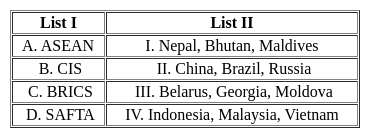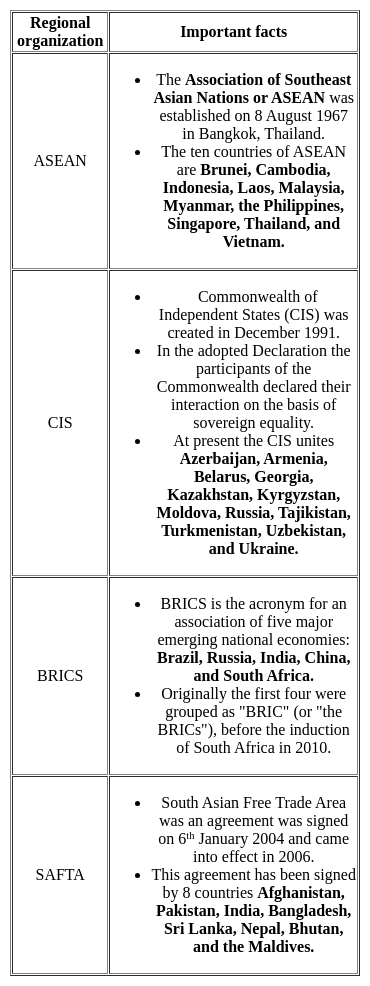UGC NET Paper 2 Geography Mock Test - 2 - UGC NET MCQ
30 Questions MCQ Test UGC NET Mock Test Series 2025 - UGC NET Paper 2 Geography Mock Test - 2
In India which age group is considered as economically productive?
The spreading and merging of places from different cultures including food, clothing, and even languages that people love and enjoy every day is known as -
Between 2010 and 2019, India's population grew at an average annual rate of:
In the Remote Sensing, Classification processes can be done using the following methods:
Which of the following statement is correct about Fusion in remote sensing image interpretation?
Abiotic factors comprise of which of these?
Given below are two statements. One is labeled as Assertion (A) and the other is labeled as Reason (R):
Assertion (A): The small regional units in rural France which are having unique agricultural termed as pays by Blache.
Reason (R): Blache strongly supported environmental determinism and criticize the concept of possibilism.
Select the correct answer from the options given below:
(a) Raw materials are available at one fixed point.
(b) There is perfect competitive pricing
(c) The demand for the product is not constant.
(d) Transport rated may vary according to climatic and socio-economic conditions.
With reference to the water on the planet Earth, consider the following statements :
1. The amount of water in the rivers and lakes is more than the amount of groundwater.
2. The amount of water in polar ice caps and glaciers is more than the amount of groundwater.
Which of the statements given above is/are correct ?
Match List-I with List-II and select the correct combination

Choose the correct answer from the options given below:
As the temperature of the black body increases,the dominant wavelength of the emitted radiation according to Wein's displacement law is:
Consider the following statements about insolation and choose the correct option.
(A) Insolation is the incoming solar energy intercepted by the earth
(B) The amount and the intensity of the insolation vary during a day, in a second and in a year
(C) The amount of insolation increases from the equator towards the poles
Given below are two statements, one is labelled as Assertion (A) and the other is labelled as Reason (R). Read the statements and choose the correct answer using the code given below.
Assertion (A) : Central Business District (CBD) of a city has high concentration of wholesale stores, offices and cultural and recreational activities.
Reason (R) : Prices and demand of real increases as distance towards CBD reduces.
Consider the following pairs:

Which of the pairs given above are correct?
(a) Monsoon break is the phenomenon which means monsoon rainfall stops for a couple of days.
(b) Western Ghats receive orographic rain during the monsoon.
(c) First rain in a place is called as monsoon burst.
(d) The El Nino current decreases the temperature of water.
Select the correct option:
Which Soil is known as Black Cotton soil?
Census data released on july 15,2011 reflects that 13.48 percent urban population lives in
|
92 docs|125 tests
|

















